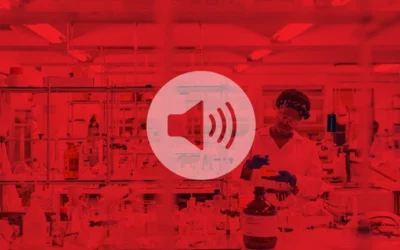Published on Leversinheels.com
Dr. Khadidiatou Sall was born in Dakar, Senegal. At age 19, she moved to France to pursue a Bachelor’s degree in Biology, and a Masters degree in Biochemistry. She later obtained a PhD in Biochemistry in the United States, before returning to Senegal.Dr. Sall is a GMO (Genetically Modified Organisms) researcher and has contributed to the discovery of genes that can help seeds become more nutritious, and plants more climate resistant (resistant to drought, cold etc.).
- What particular memory in the STEM field was a first-time experience or stood out to you? Did this influence your decision to be in STEM?
Dr. Sall mentions how she has always been interested in science since she was young. She was making toys for herself, was curious, loved exploring and asking questions. She believes those are personality traits of one who is to go into science.Dr. Sall chose Biology mainly because of the hands-on approach she believed she would experience:“With Biology, you are the body, which can be an experimental tool. I can feel, see and therefore learn. The Senegalese education system does not encourage a hands-on approach to STEM learning. Maybe I would have gone into engineering.”
- Any particular person who influenced your decision into STEM?
Although, she lacked mentorship in immediate environs, her parents and uncle were very educated and guided her. Dr. Sall mentions:“They were supportive and are more like life mentors.”
- You are working on a project with young children in STEM. Could you tell us a bit about it?
In 2015, Dr. Sall founded the organisation “SeeSD” – Science Education Exchange for Sustainable Development; a response to her growing up without mentorship and a hands-on approach to STEM learning. The organisation designs programs, curricula and experiences with close attention given to local context to educate children in STEM. They also train STEM educators and run programs in different schools. There is a pedagogy-based teaching that enables them to explore and build with their own hands.“Last year, the children were assigned a project to build a house. They figured out the architecture, engineering, structural works, electrical wiring, and completed the work.”
- Tell us about the impact of SeeSD
“The reason for the local context which is providing content in local languages is to have students understand and absorb principles and concepts better. So far 400 students in Senegal have benefitted from SeeSD.”
- Why are you embarking on this particular project? What are your future expectations?
“The project aims to reach more schools in Senegal. We have plans to train teachers to transform the Senegalese education system, and to be more hands-on and scientific in their teaching.”
- Anything else you would like to add?
“A lot of people are realising that Africa cannot move without STEM. So there is a shift to include STEM education. I am hopeful about the future of STEM in Africa as this realisation is a step towards getting the job done.”





